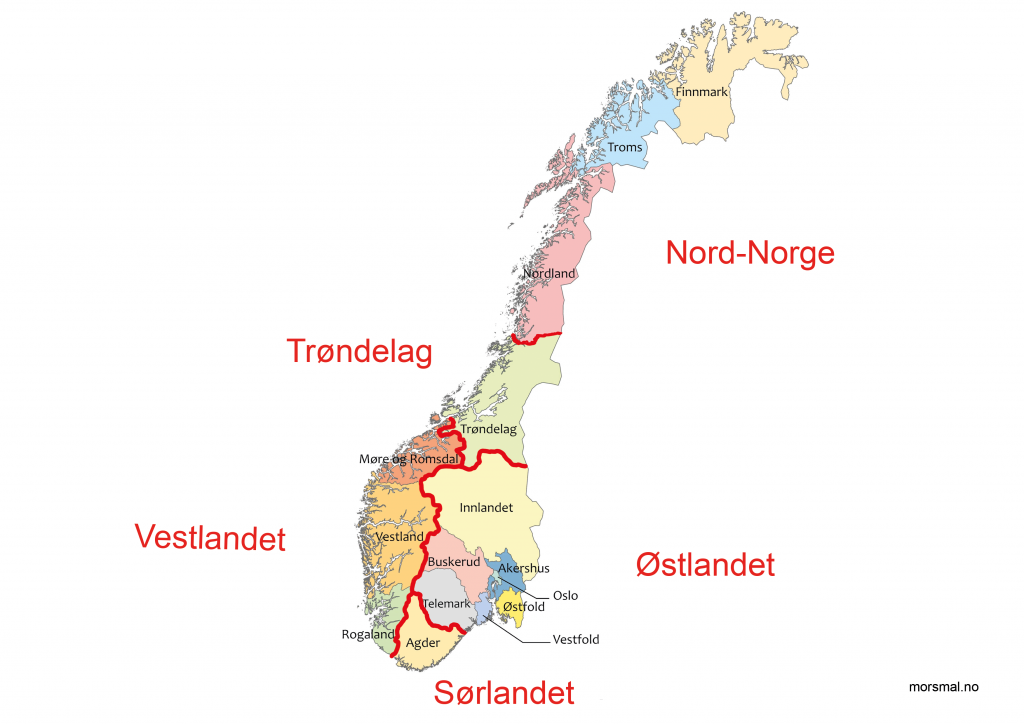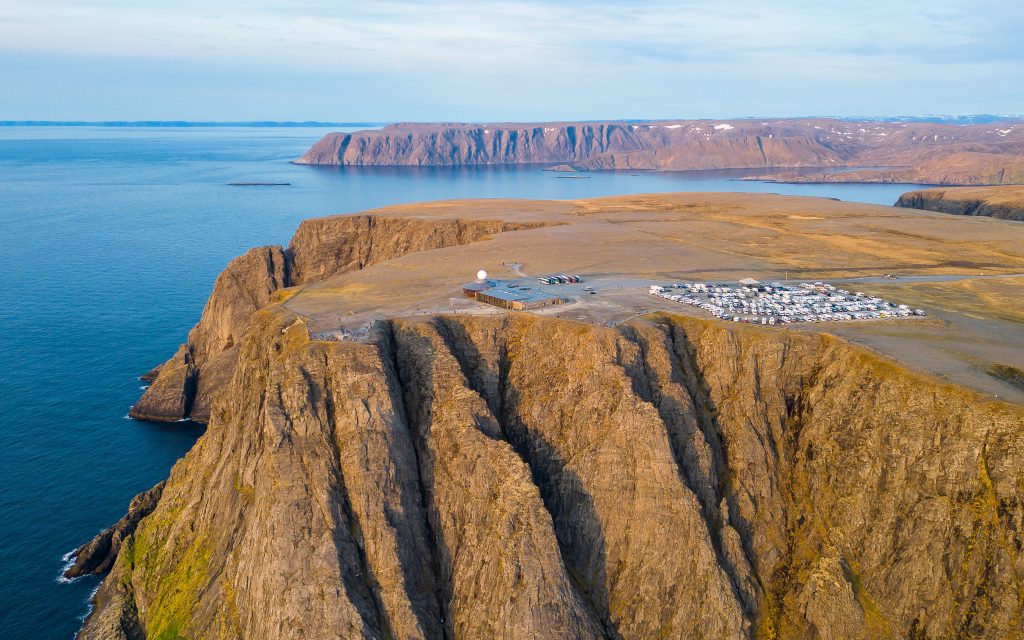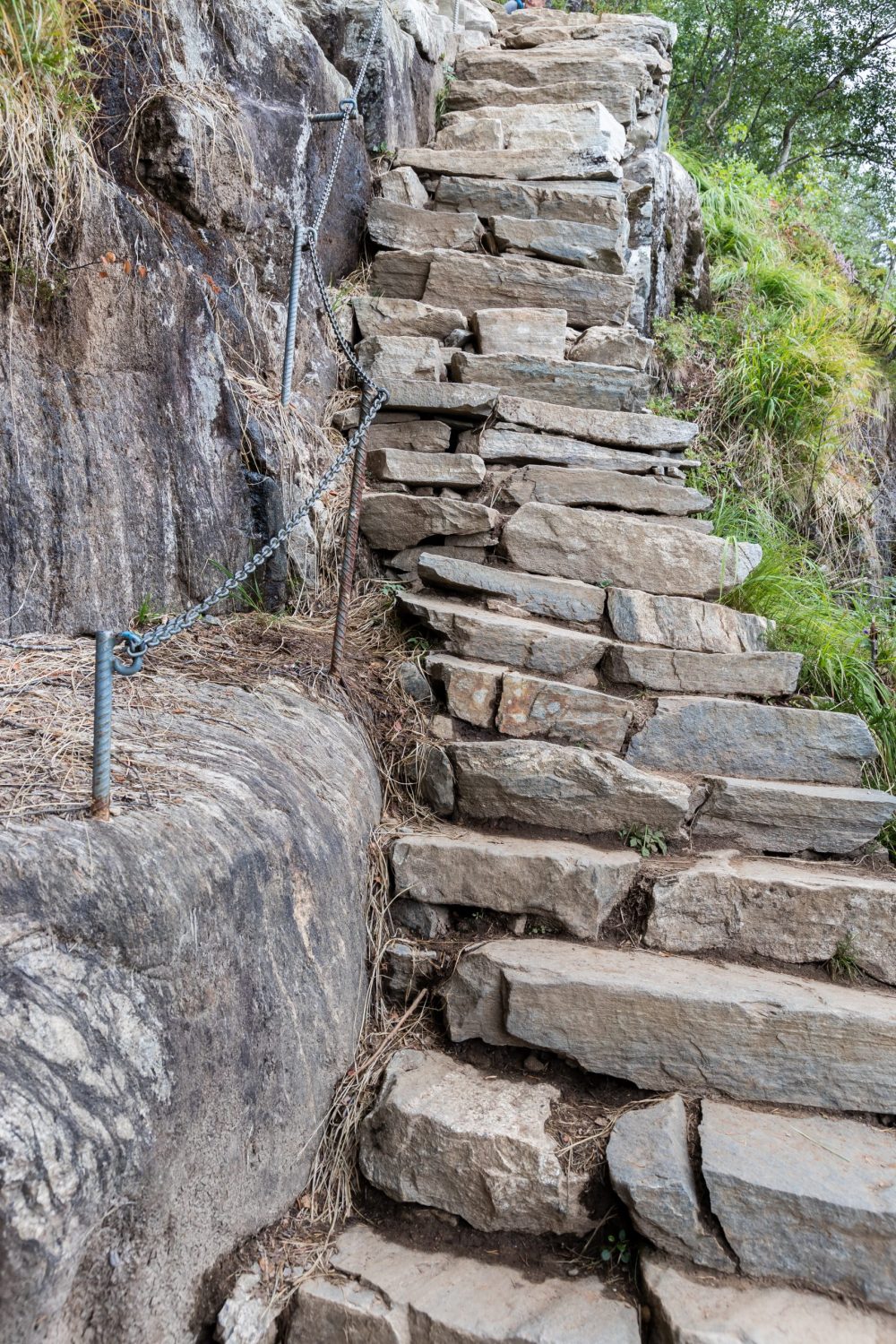Landsdeler og fylker i Norge // Regions and counties in Norway
What regions does Norway have? How many counties is Norway divided into?
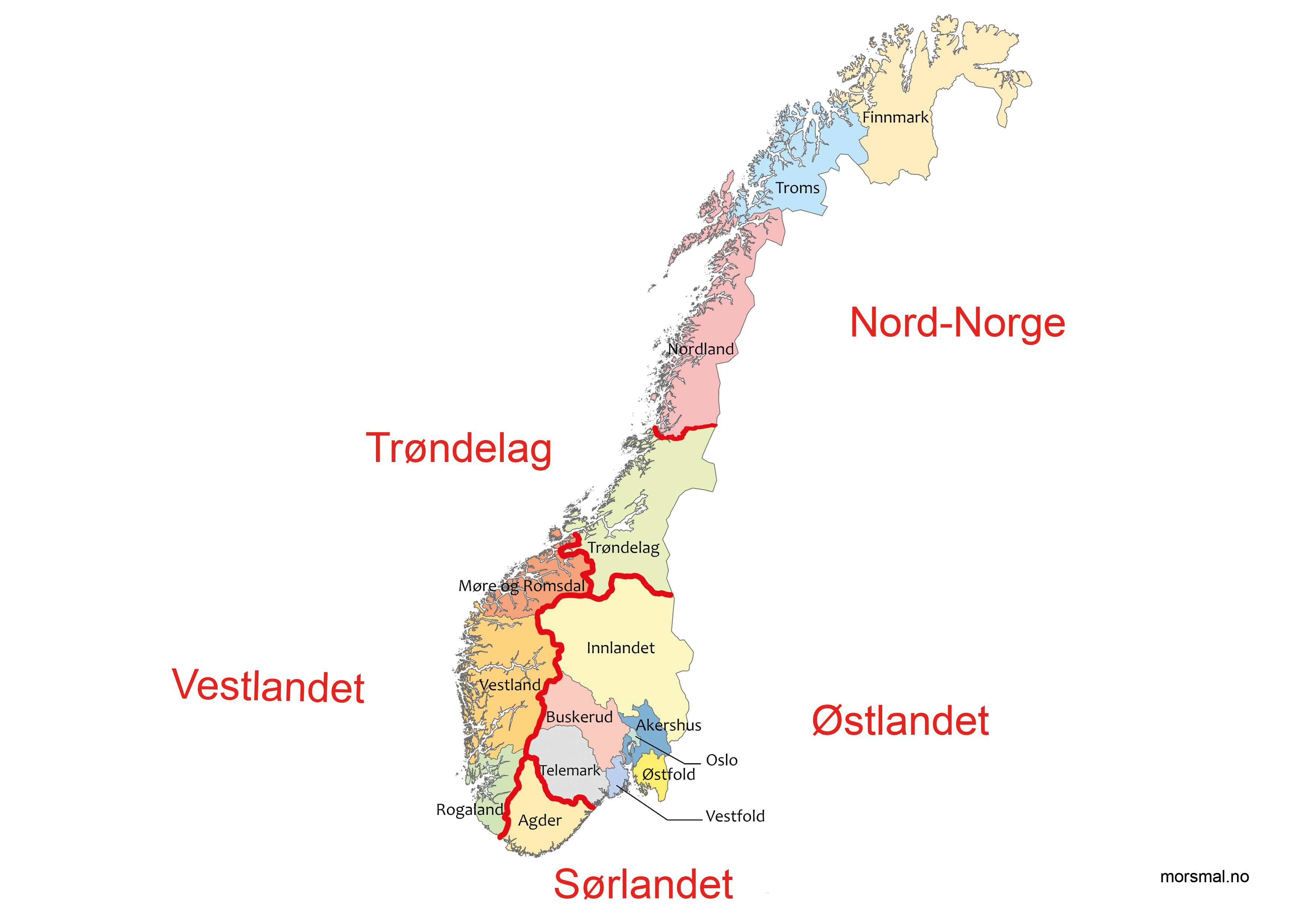
Norway is divided into five regions: Nord-Norge, Trøndelag, Østlandet, Sørlandet and Vestlandet. Each region contains one or more counties.
There are fifteen counties in Norway. Each county is an administrative unit which means each county is run by a locally elected political administration, called a county council. A county council governs each county. Members of the county council are elected by the citizens of the county.
Nord-Norge (Northern Norway)
Nord-Norge (Northern Norway) is the district that lies the farthest north in the country. It is made up of the three counties: Finnmark, Troms, and Nordland.
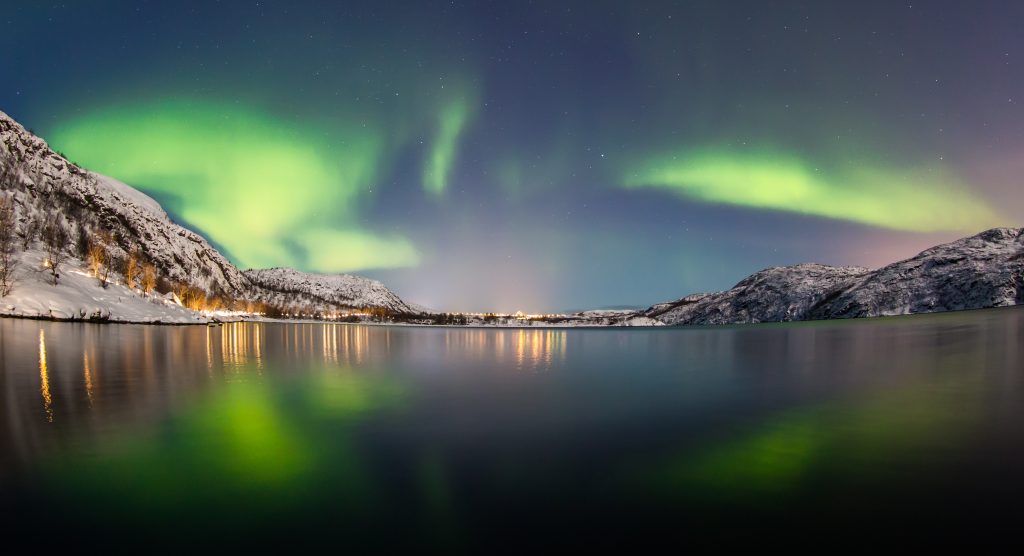
The largest part of Nord-Norge lies north of the Arctic Circle. The Polar Night, which happens during part of winter, only occurs north of the Arctic Circle and the Midnight Sun occurs during part of the summer. When it is Polar Night, one cannot see the sun at any time during the day. During the period of Midnight Sun, the sun is out both during the day and night. The farther north one goes, the more days there are with Midnight Sun and Polar Nights. In the North Cape it is Polar Night from the 20th of November to the 22nd of January, and it is Midnight Sun from the 14th of May to the 29th of July.
In Nord-Norge one can see the Northern Lights during the winter. The Northern Lights are green and pink light that moves across the sky.
Finnmark County
Finnmark lies the farthest north and farthest east in Norway and borders Russia and Finland. Finnmark is Norway’s second largest county by area and the least populated. The North Cape is a famous tourist attraction in Finnmark. The North Cape is often referred to as Norway’s and Europe’s northernmost point. This is not completely true because Knivskjellodden lies about 1.5 kilometers farther north.
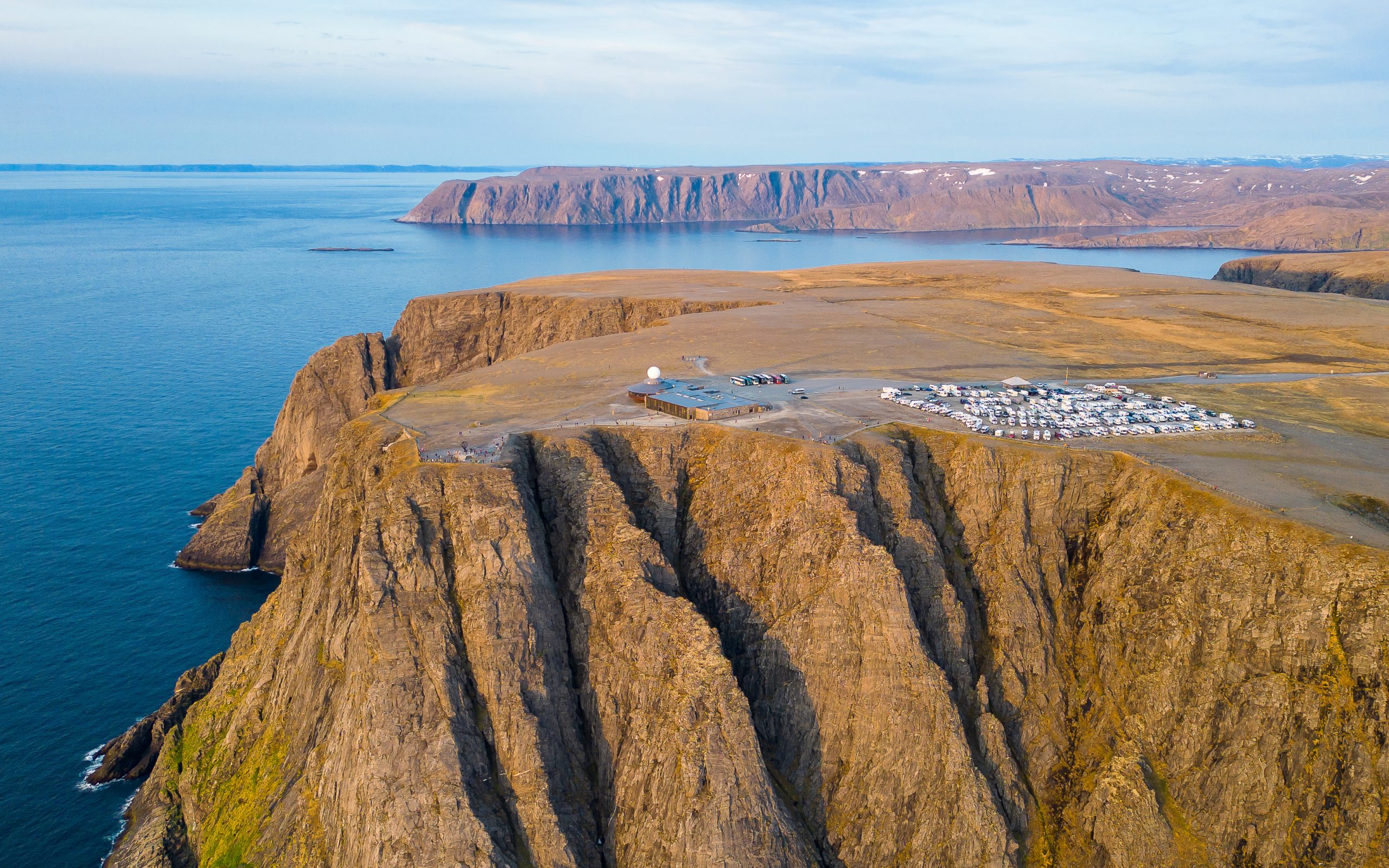
A lot of Sami live in Finnmark and the Sami language is as present as Norwegian in many parts of the county. The Sami parliament is an elected entity with a mandate to secure and protect the Sami rights, language, and culture. The Sami parliament is in Karasjok.

Foto: Flickr
Troms County
Troms is Norway’s second northernmost county. The county borders Finnmark. Tromsø is the county’s largest city, and also the biggest city in Northern Norway. A famous church in Tromsø is the Arctic Cathedral. The building’s form resembles glaciers and mountains.
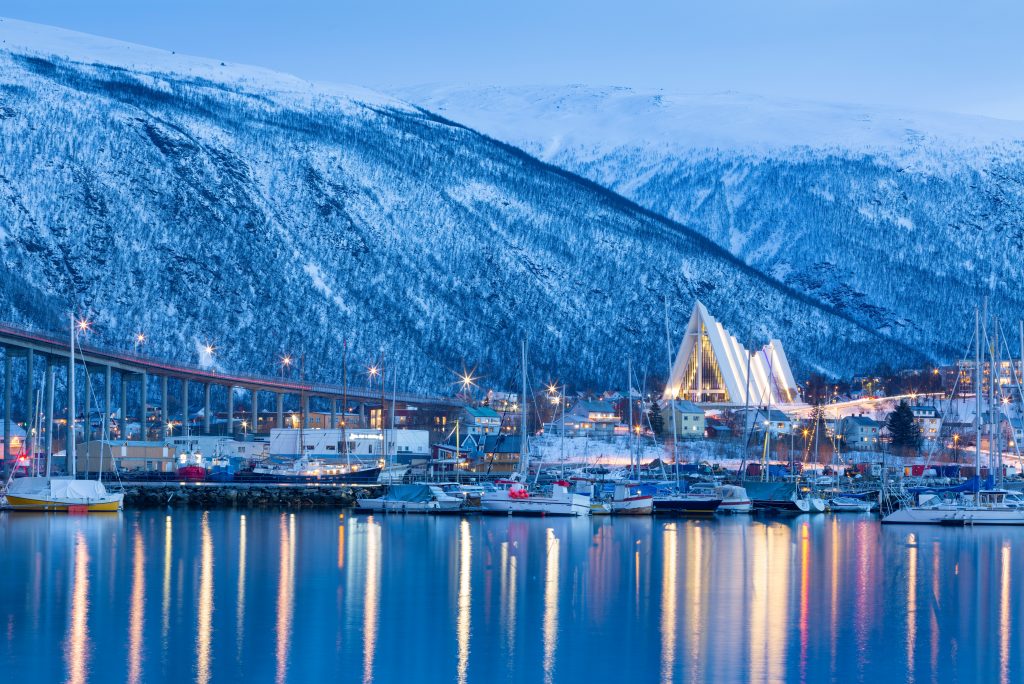
Nordland County
Nordland is a long and narrow county that borders Sweden. Bodø is the biggest city in Nordland.

Lofoten is in Nordland and is made up of many islands. From January to April, large amounts of arctic cod are caught in Lofoten. Arctic cod is a type of cod that lives far north in the Barents Sea for most of the year. The arctic cod swim to the coast to lay eggs in the period from January to April. Much of the cod is dried. Fish that is dried is called stockfish. Most of the stockfish is exported to other countries, for example Italy and Nigeria.
The northern Arctic Circle goes through Nordland. North of the Arctic Circle is the Polar Night and Midnight Sun.
Trøndelag Region
Trøndelag lies in the middle of the country and is both a region and a county. The region is called Mid-Norway. Trøndelag has long fjords, fertile farmland and tall mountains. The longest fjord in Trøndelag is Trondheim’s fjord and Trollhetta (Troll’s hood) is the tallest mountain. Trøndelag borders Sweden.
The biggest city in Trøndelag is Trondheim. Trondheim is the third largest city in Norway. The Nidaros Cathedral is a famous cathedral in Trondheim. The Nidaros Cathedral is the northernmost medieval cathedral in the world.
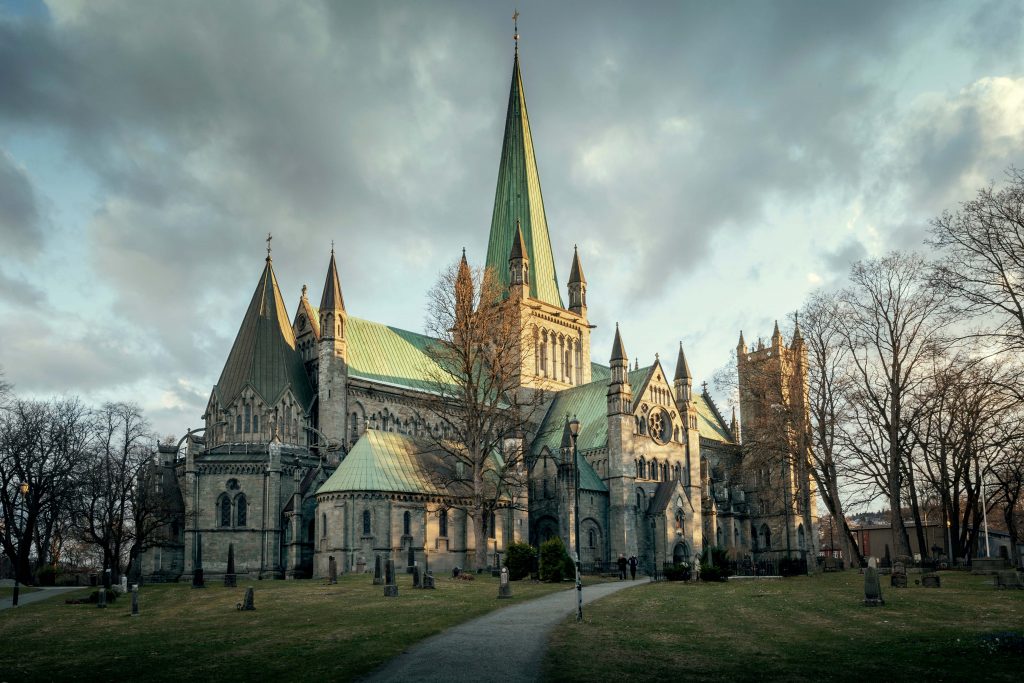
Røros is a city in Trøndelag. Røros lies high up in the Røros mountains. The city was founded there because of the copper which was discovered in the mountains in 1644. Copper mines were built. People moved to Røros to work in the mines. This is how the city grew.
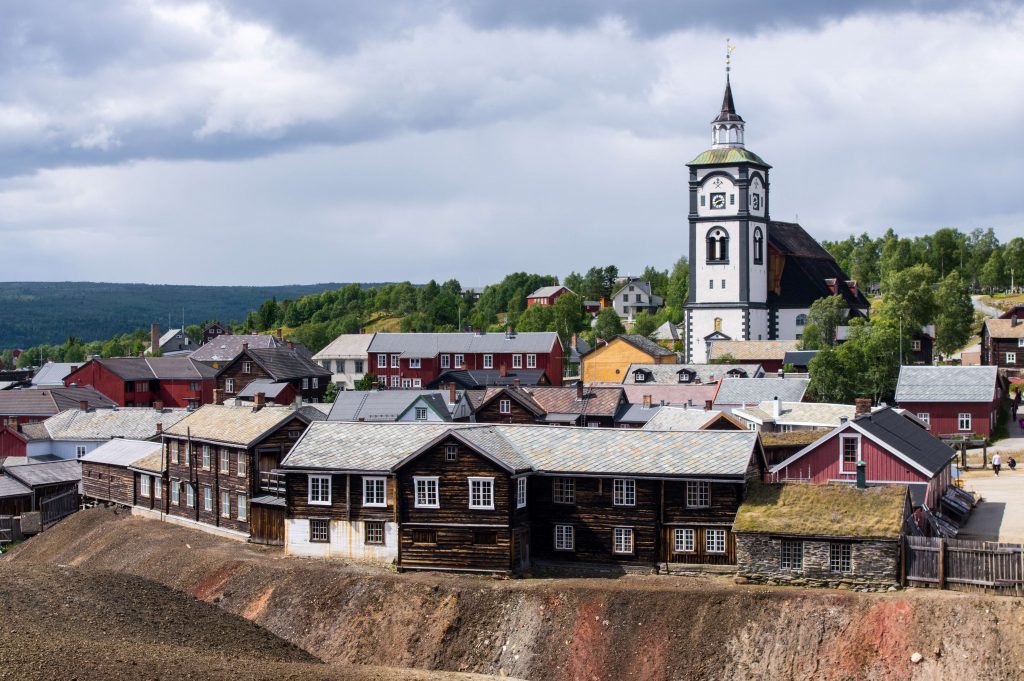
Østlandet Region
Østlandet is in the south-eastern part of the country. Østlandet is made up of 6 counties: Oslo, Vestfold, Telemark, Buskerud, Akershus, and Innlandet. Østlandet has a varied landscape with flat farmland in the east and mountainous areas in the west. The region also has several lakes, like Mjøsa and Tyrifjorden. Østlandet is the largest and most populated region in Norway. Almost half of Norway’s population lives in Østlandet.
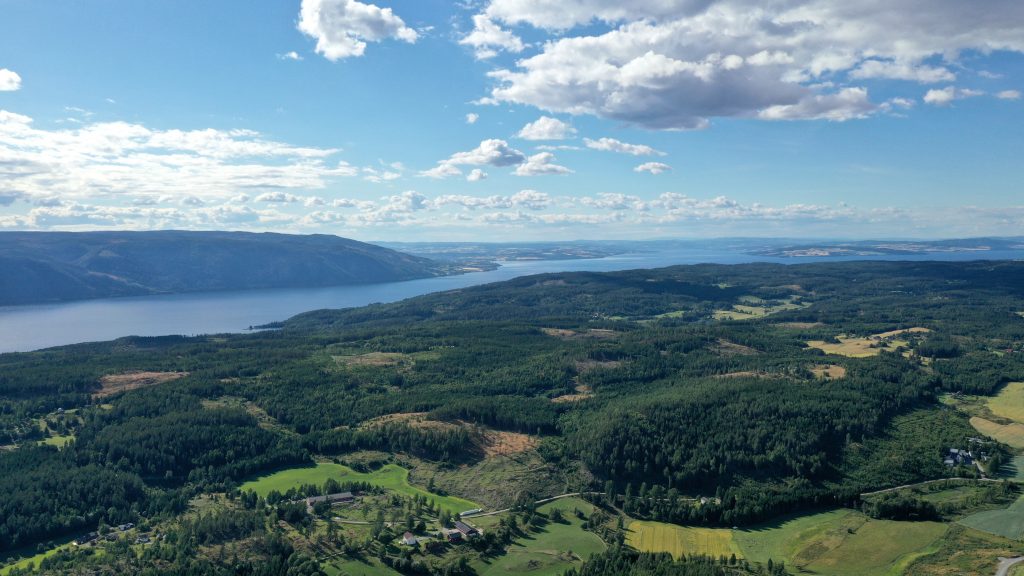
Oslo
Oslo is Norway’s capital and the biggest city in Norway. The city is positioned at the innermost point of the Oslo Fjord. Well-known landmarks in Oslo are the Royal Castle, the Parliament building, the Opera House, and the Frogner park. The Frogner Park is a park known for its many statues.

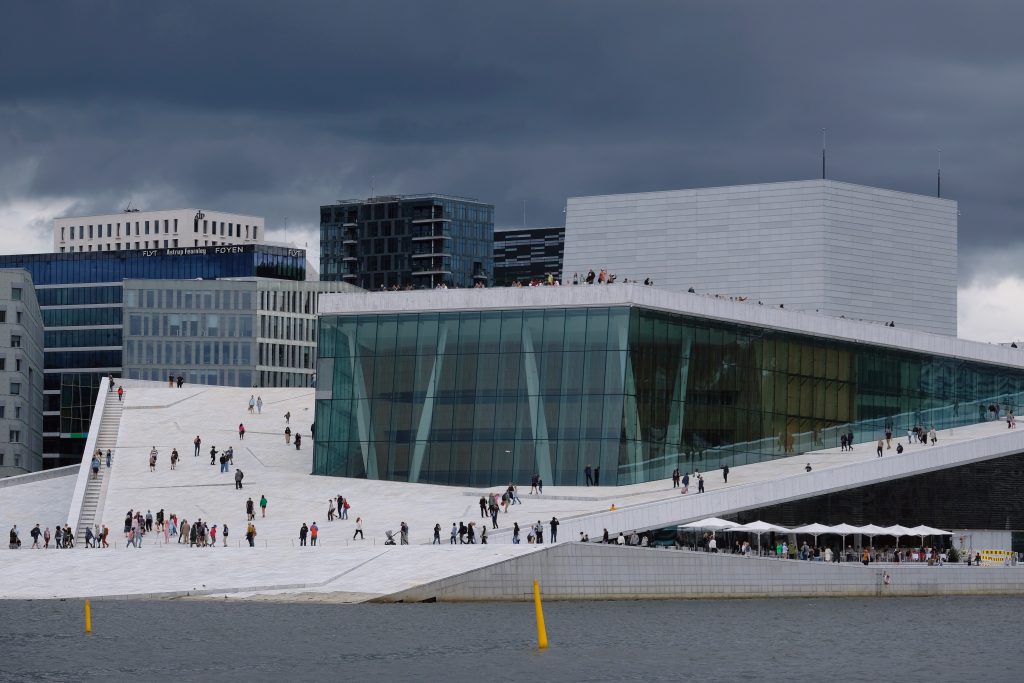
Vestfold County
Vestfold lies west of the Oslo Fjord and is the smallest county measured in area. The county has a long coastline and an archipelago of many small islands, islets, and skerries. Tønsberg is the biggest city in Vestfold and is thought to be Norway’s oldest city.
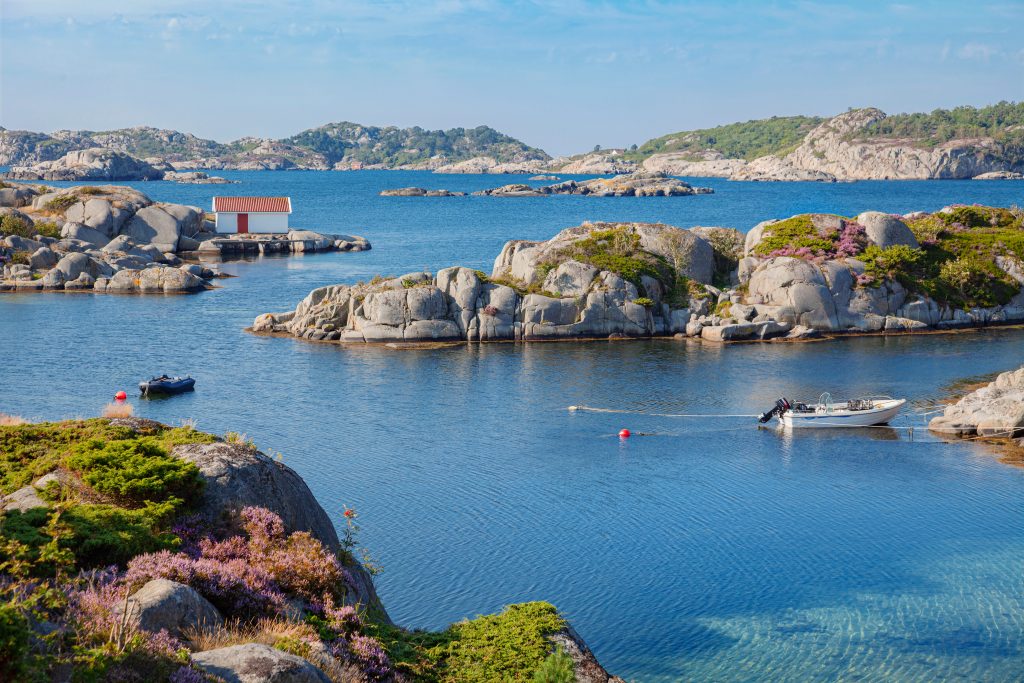
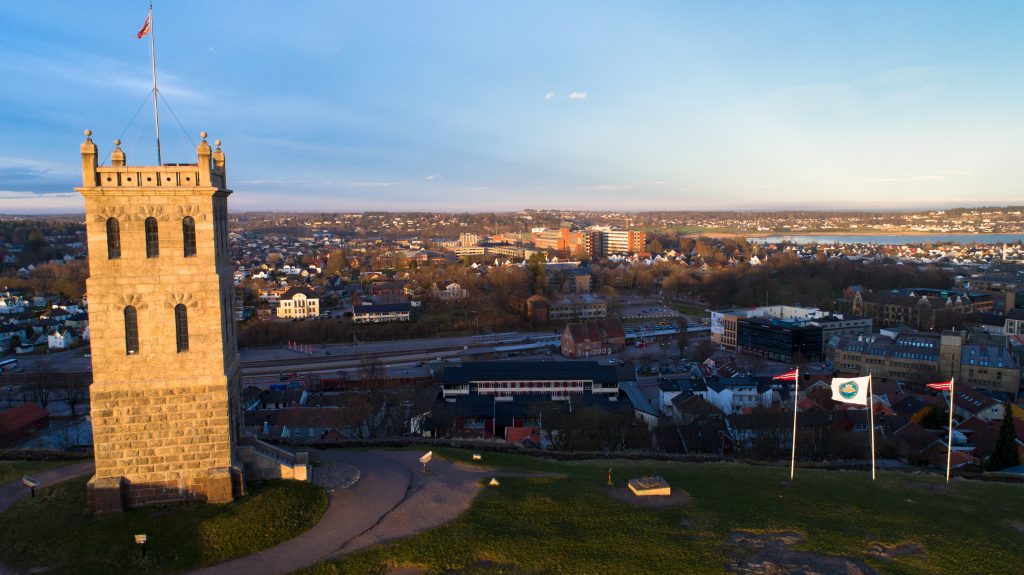
There have been many archeological finds from the Viking era in Vestfold, and among them the Oseberg ship. The Oseberg ship was found in a large grave site in Tønsberg. The ship was used as a funeral ship for two women.
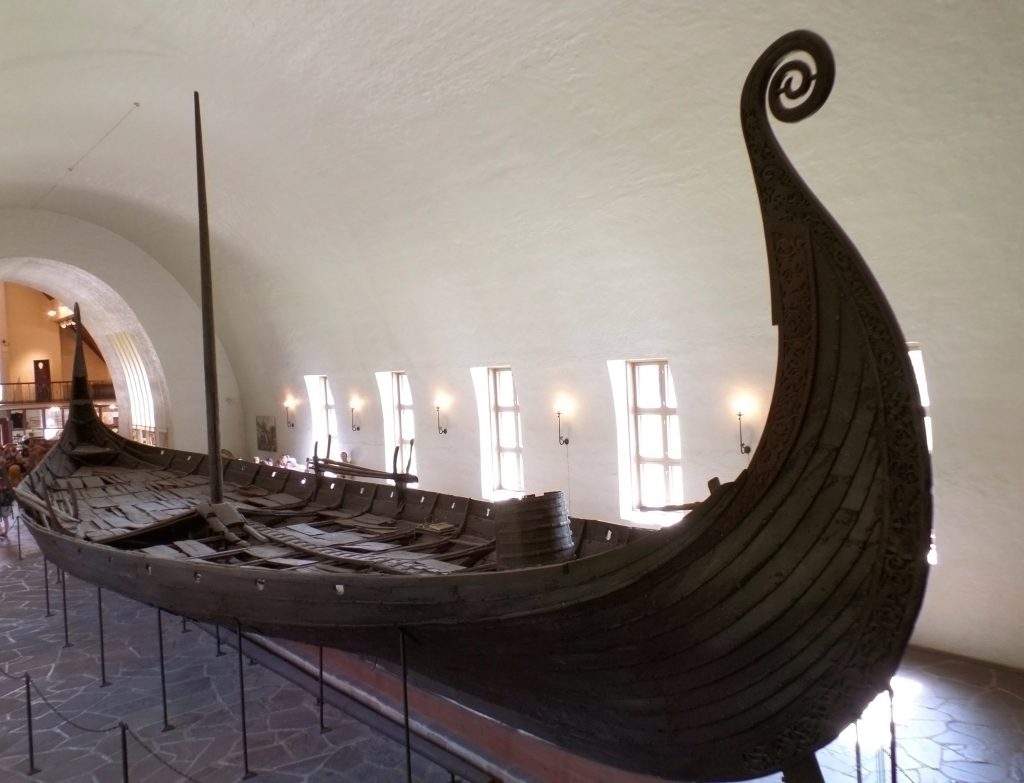
Telemark County
Telemark extends from the coast to the high mountains. Skien and Porsgrunn are the biggest cities in the county.
The city of Rjukan, which is a UNESCO world heritage site, is in Telemark. The city was founded in the early 1900s by Norsk Hydro in order to produce artificial fertilizer to provide increased and consistent food production in Norway and Europe.
Gaustatoppen is the highest mountain in Telemark. One of the attractions of Gaustatoppen is called Gaustabanen. Gaustabanen is a funicular railway that runs in a tunnel from the foot of the mountain to the top.
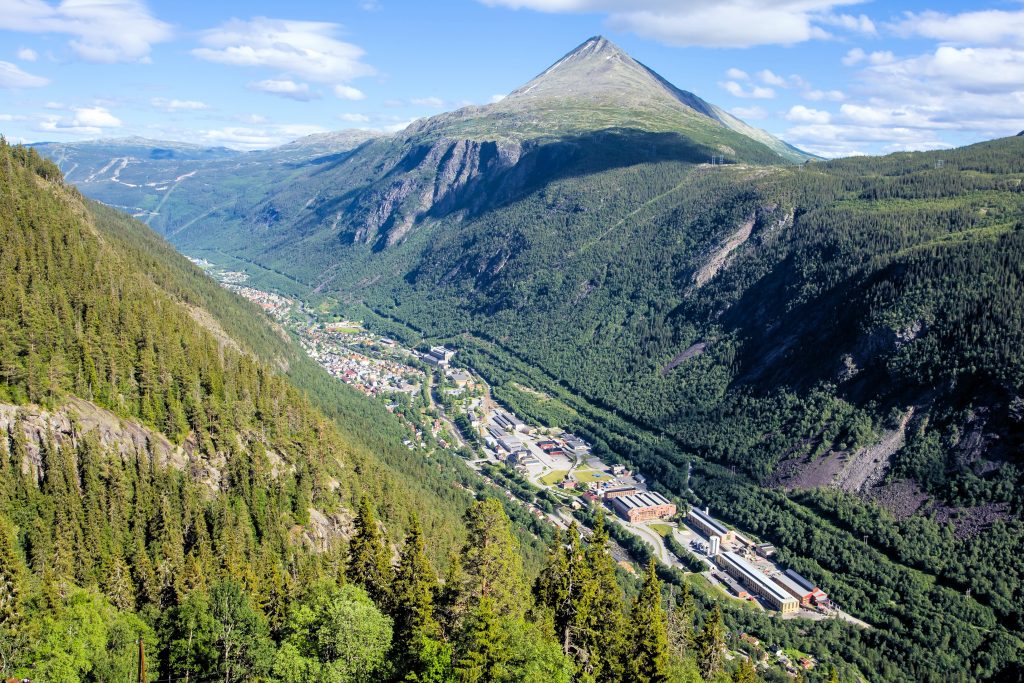
Buskerud County
Buskerud is situated west of the Oslo Fjord and extends from the coast up to the Hardanger plateau. The Hardanger plateau is about 8,000 square kilometers and is Northern Europe’s largest mountain plateau. A mountain plateau is a large and fairly flat area that lies high above sea level. A high mountain plateau is often referred to as “vidde” in Norwegian.
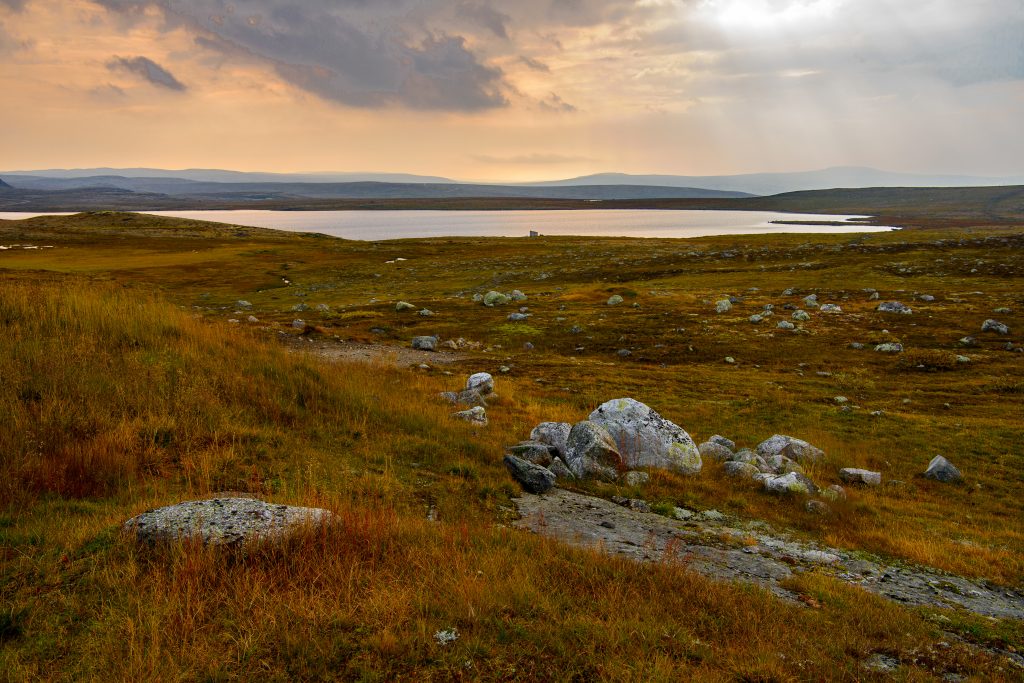
The biggest cities in Buskerud are Drammen, Kongsberg, and Hønefoss. Drammen is alongside the Drammen River which is one of the biggest rivers in Norway. Kongsberg is most known for silver mines. The silver mines are no longer in use, but have been turned into a museum.

Akershus County
Akershus county is the third smallest county by area, but it is the second most populous with approximately 700,000 inhabitants. The county stretches from the Oslo Fjord in the south to the Mjøsa Lake in the north. Akershus has a varied terrain with both coastline, farmland, and forests.
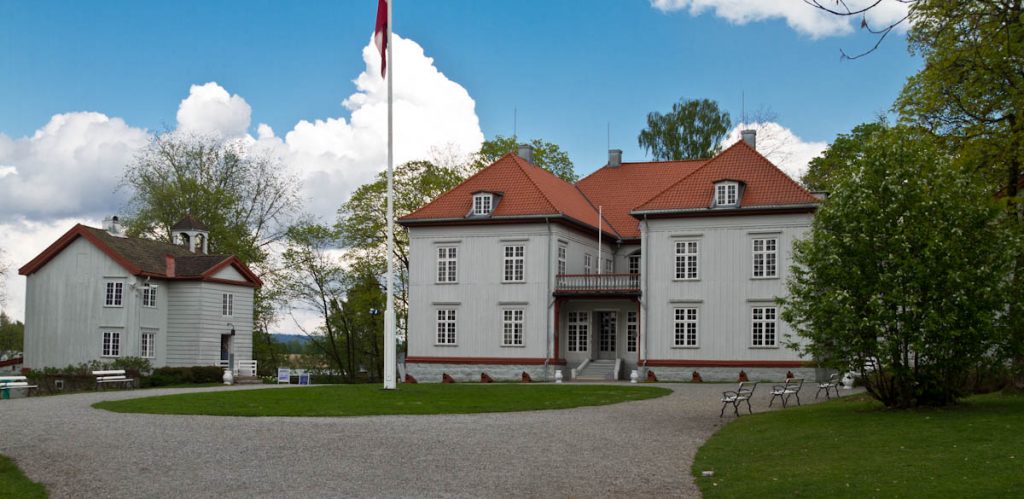
Foto:Wikimedia
Eidsvoll is in the north of Akershus county, just south of Mjøsa. Eidsvoll is famous for the Eidsvoll Buildings. It was in these buildings that the Norwegian constitution was written in 1814.
Norway’s main airport is Gardermoen, which is about in the middle of Akershus County.
Østfold County
Østfold is the county that lies the most south-east in the country. The county has borders with Sweden. The biggest cities in the county are Fredrikstad and Sarpsborg. Norway’s longest river, Glomma, runs through Sarpsborg and ends in Fredrikstad at the ocean.
Fredrikstad and Halden are prominent cities in Østfold. The oldest part of the city in Fredrikstad is considered to be Northern Europe’s best preserved fortress. The fortress’ fortifications are from the 1600s.
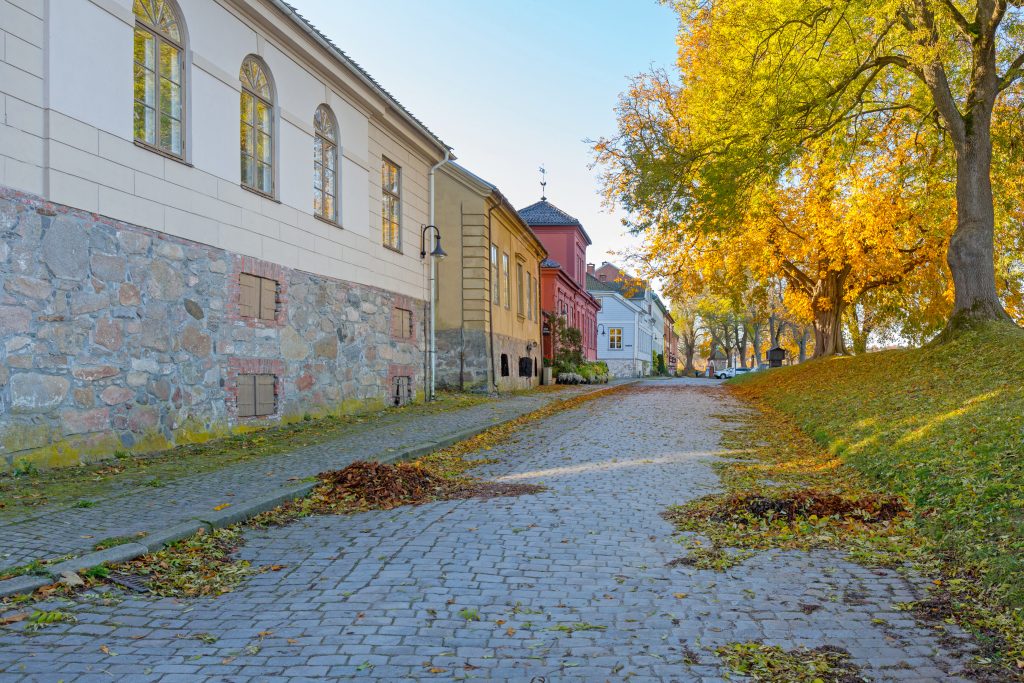
Fredriksten Fortress is a historical fortress in Halden. The fortress was built in 1661 as a defense fortification at the border with Sweden. Today, the Fredriksten Fortress is a popular tourist attraction.
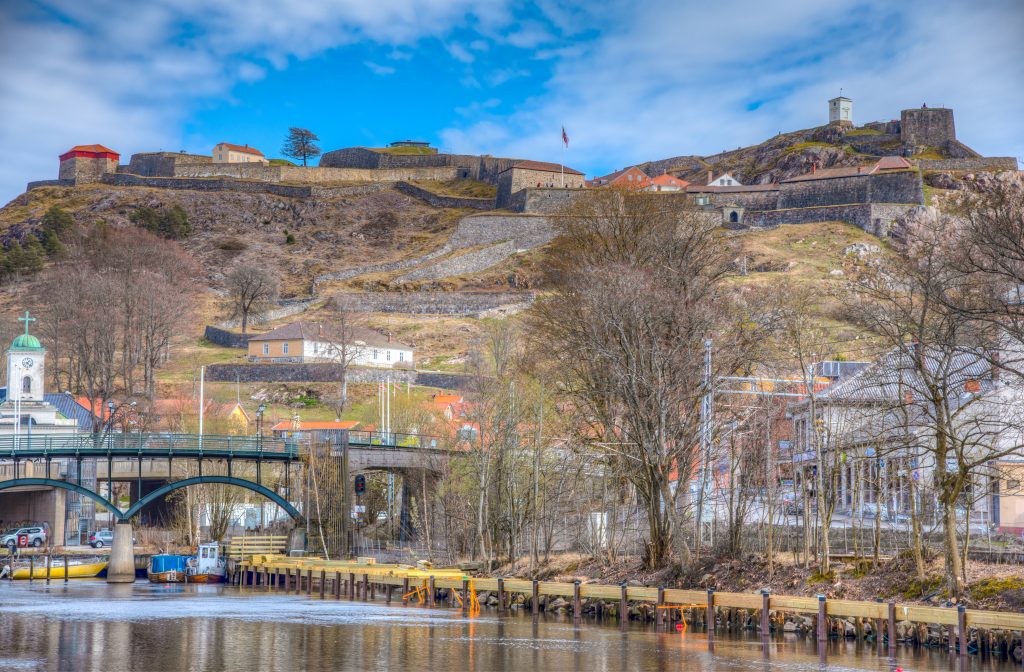
Innlandet County
Innlandet is the largest county by area and the only county that does not have a coastline. Innlandet stretches from the fertile farming areas in the east to the high mountains in the west. The county borders Sweden. The largest cities are Hamar, Lillehammer, and Gjøvik. All of these cities are on Lake Mjøsa which is Norway’s biggest lake.

Two famous mountain areas in Norway are Dovrefjell and Jotunheimen. Both are situated in Innlandet. The two highest mountains in Norway, Galdhøpiggen and Glittertind, are in Jotunheimen.
Innlandet is the country’s largest cabin district with about 90,000 huts or recreational cabins. Most of these recreational cabins are situated in connection with popular tourist places, for example Trysil, Hafjell, and Kvitfjell. These are all famous places for skiing in the wintertime and outdoor activities in the summer.
Sørlandet Region
There is only one county in Sørlandet, namely Agder. Sørlandet has a fine archipelago with islands and islets and many places for swimming. Sørlandet is a popular travel destination for summer vacation with its many beaches, camping sites, and recreational homes along the coast.
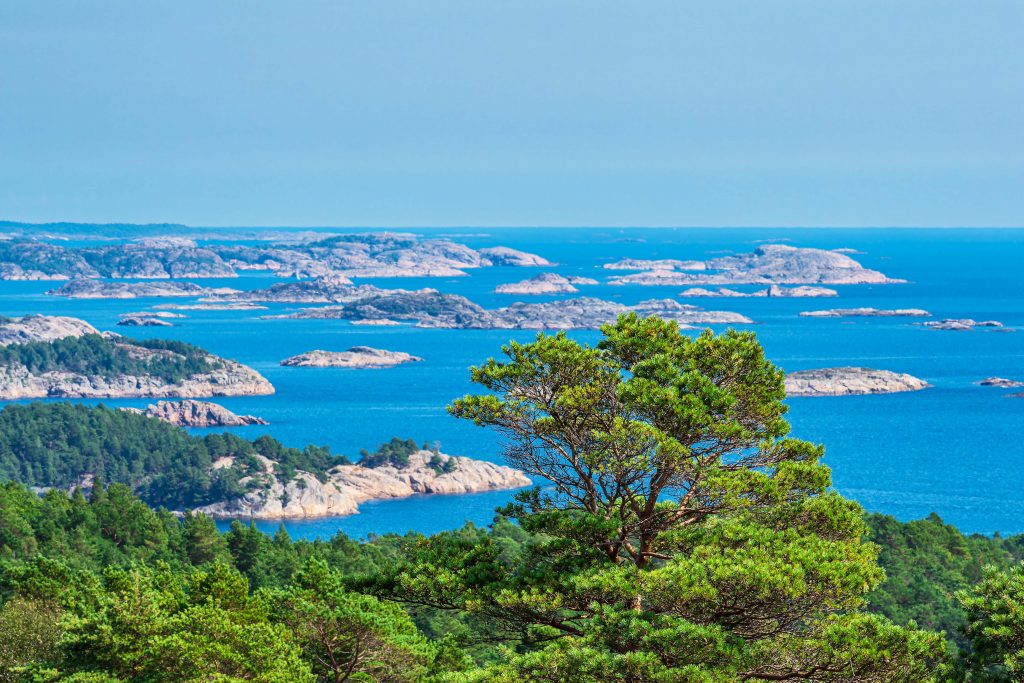
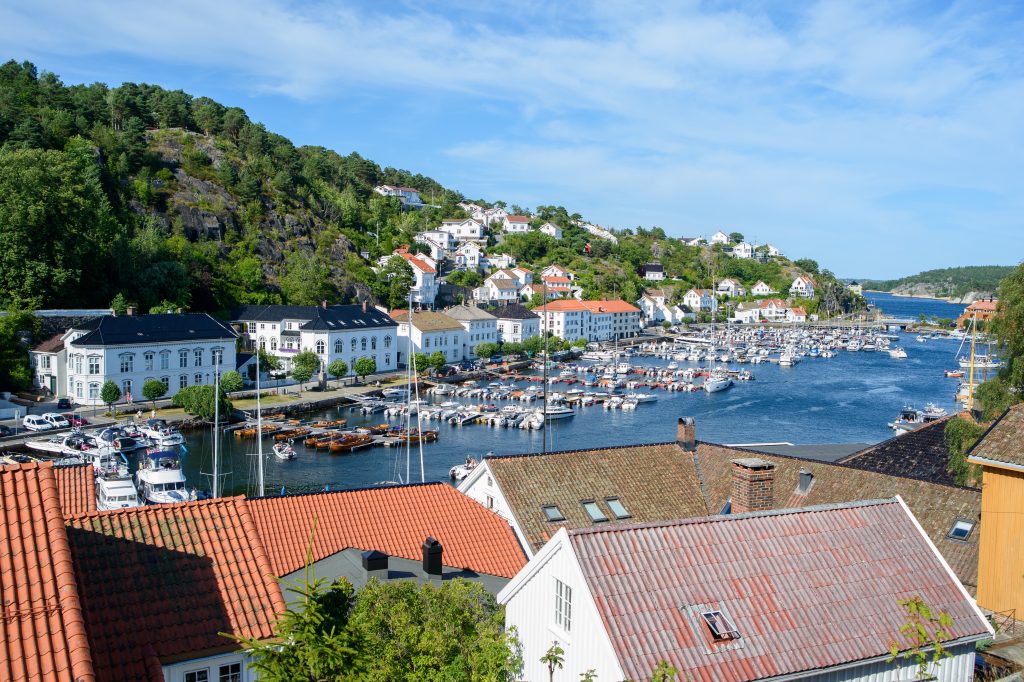
Sørlandet is known for its small cities and towns with narrow streets and white wooden houses. Risør and Grimstad, for example, are often associated with this quaint style. The two largest cities in Sørlandet are Kristiansand and Arendal.
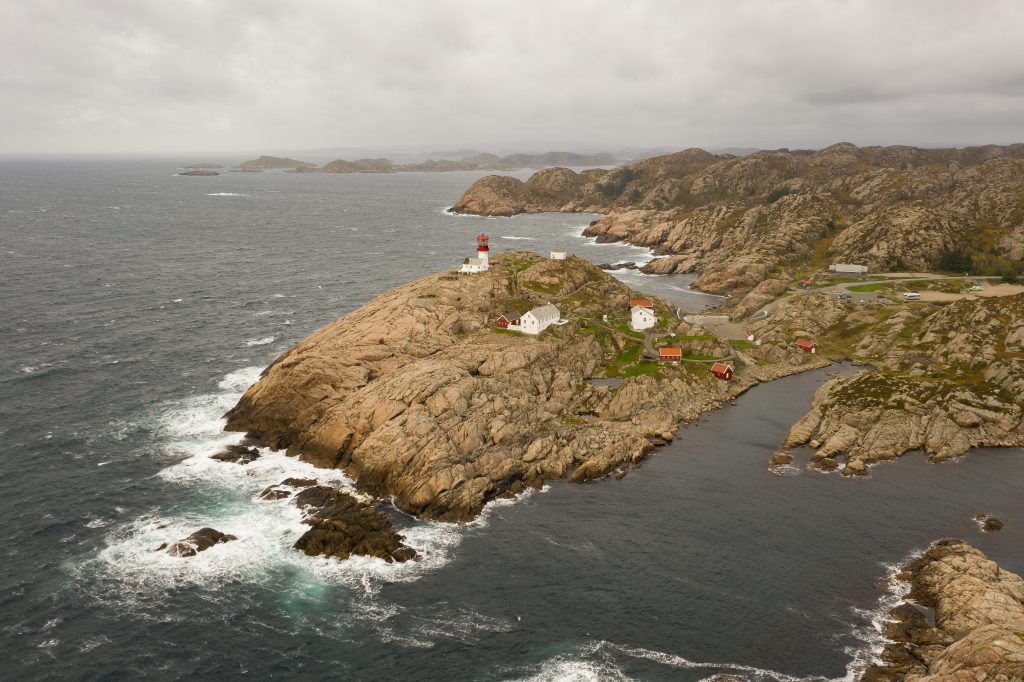
Norway’s southernmost point is Lindesnes. The Lindesnes lighthouse was built in 1656 and is the oldest lighthouse in Norway. It is still in service and there is an associated museum.
Vestlandet Region
Vestlandet is comprised of the three counties: Møre and Romsdal, Vestland, and Rogaland. The geography of Vestlandet is characterized by long and deep fjords and steep terrain with tall mountains. Norway’s longest fjord, Sognefjorden, is in Vestlandet. It is 204 kilometers long. The biggest cities are Bergen, Stavanger, Ålesund, and Haugesund. Vestlandet is famous for its seafood, especially salmon and salt-dried stockfish, and its oil industry.
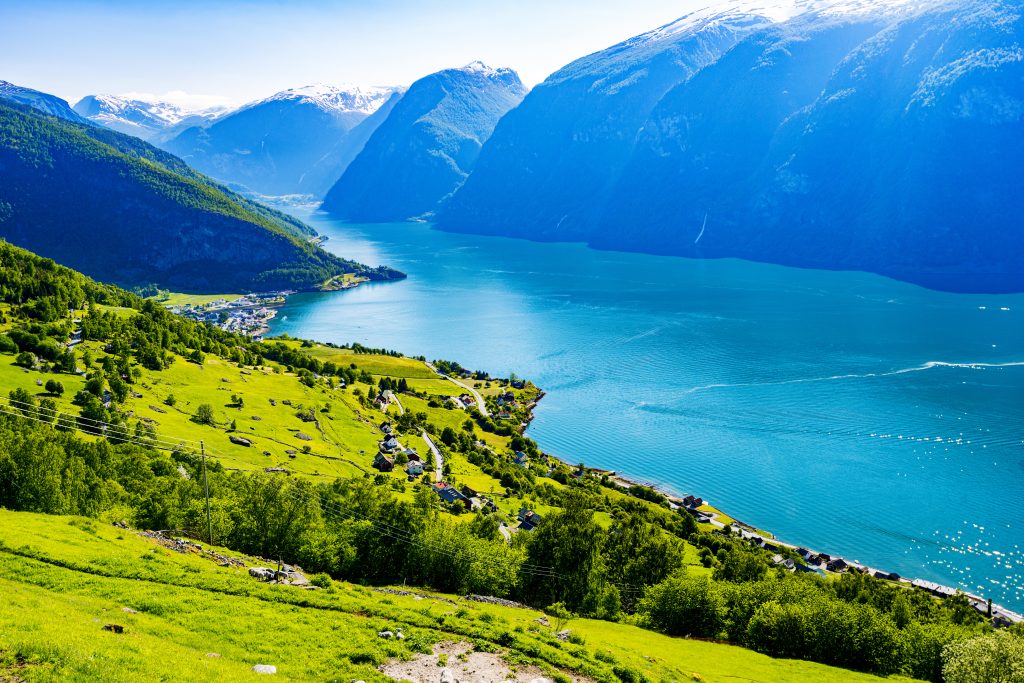
Rogaland County
The biggest city in Rogaland is Stavanger. Oil was discovered in the North Sea near the end of the 1960s. It was decided that the main office for the oil industry would be in Stavanger. There were four employees in the beginning. One of them was Farouk Al-Kasim who was from Iraq.
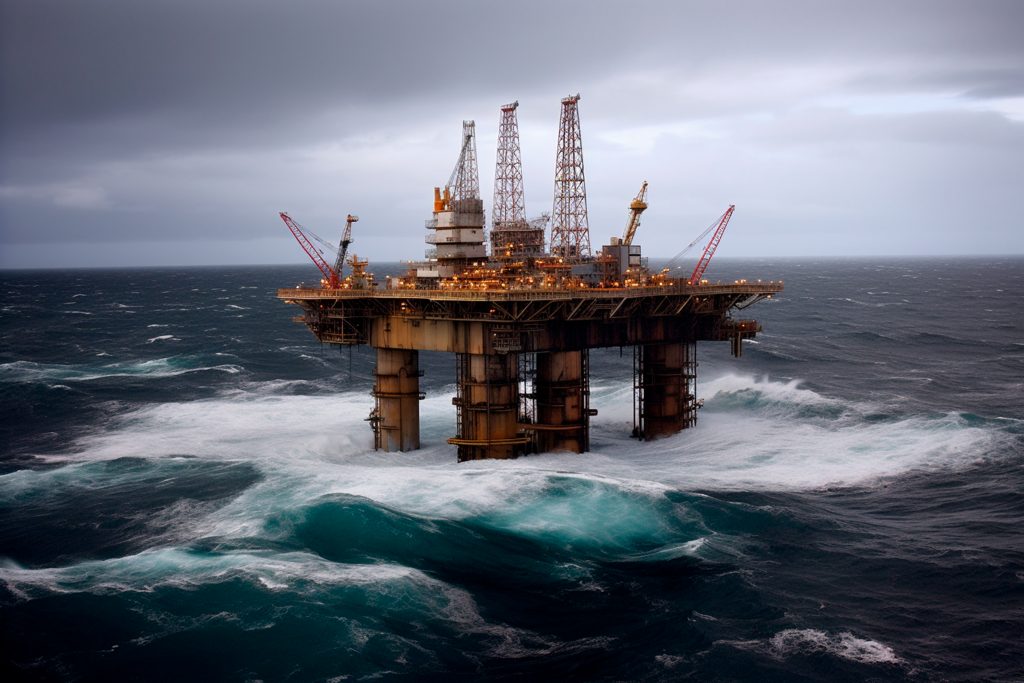
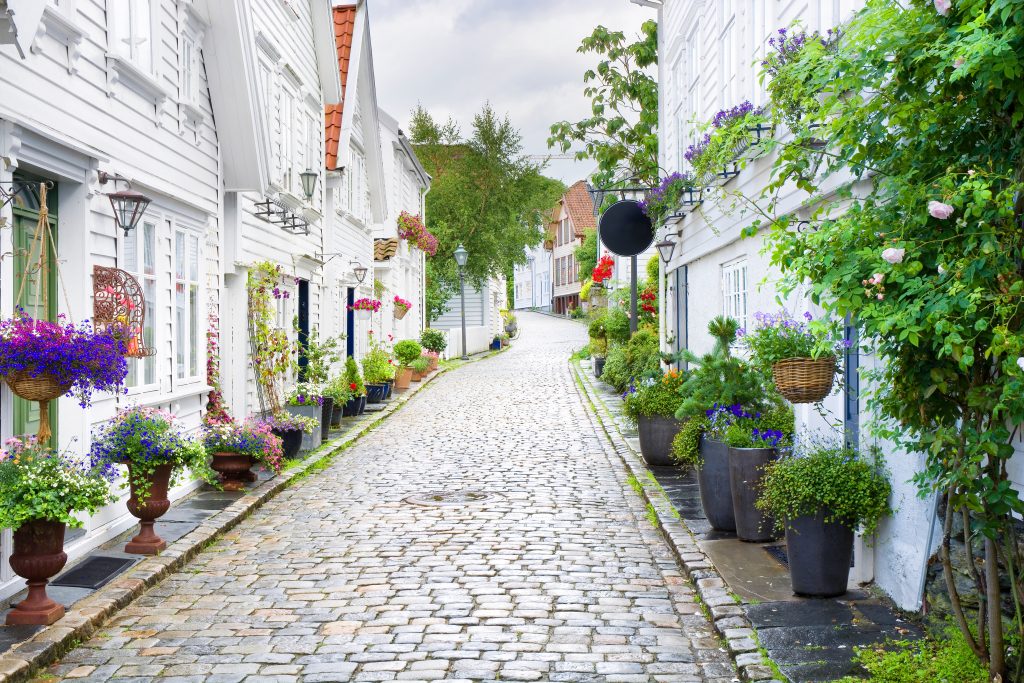
Vestland County
The biggest city in Vestland is Bergen. Bergen is the second largest city in Norway and the city often is called Vestlandet’s capital. The wharf in Bergen is a famous attraction.
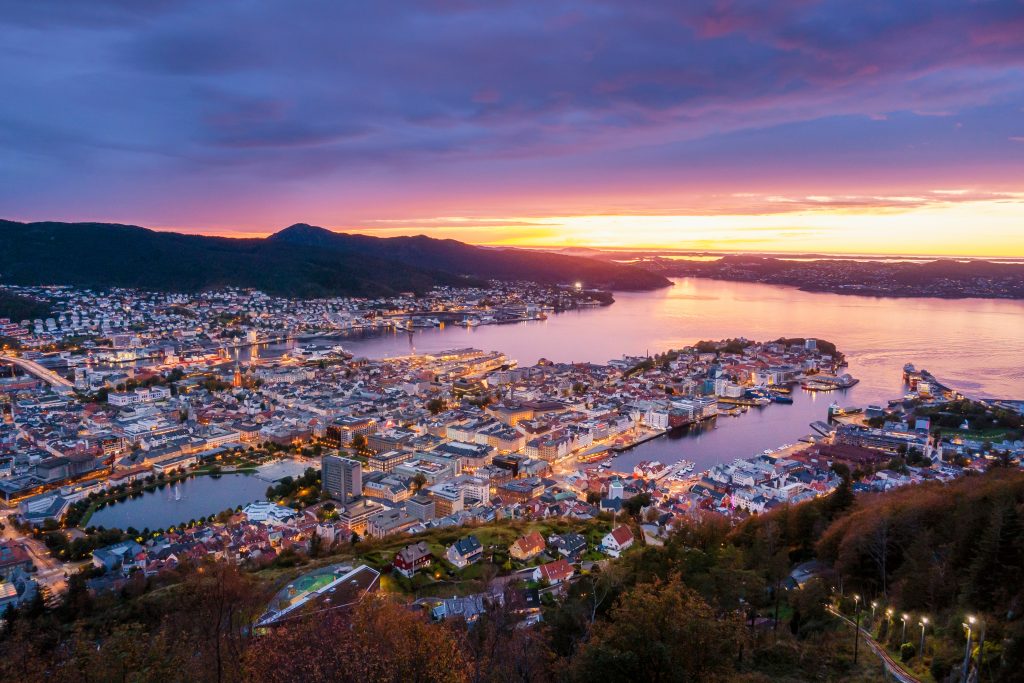
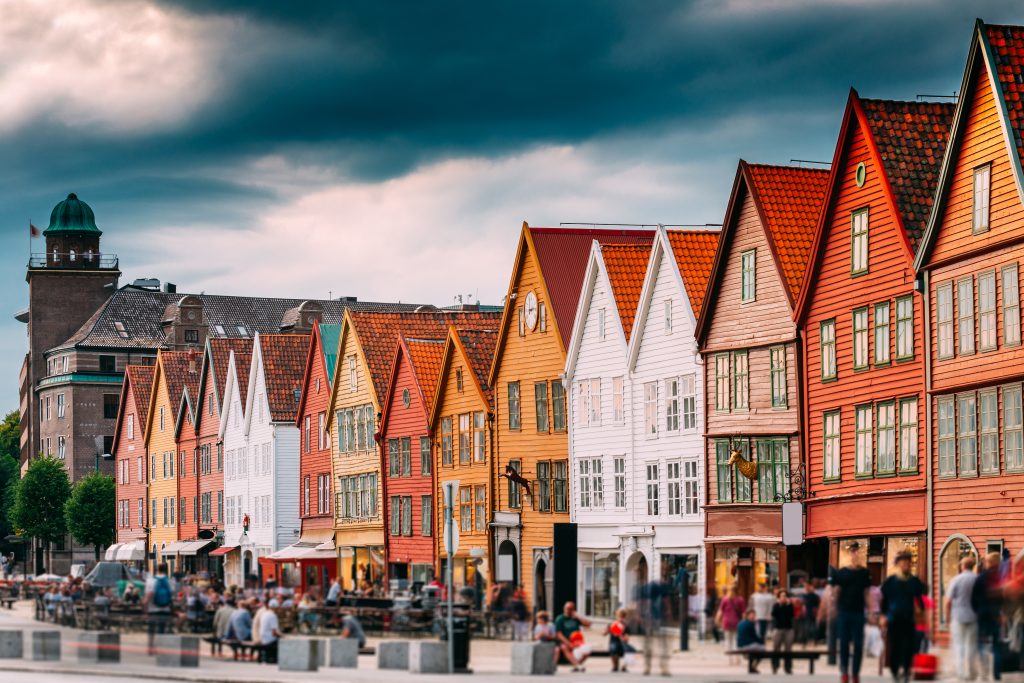
There are many glaciers in Norway. A glacier is a large area made up of ice. Some places are so cold in the summer that the snow doesn’t melt. The snow then builds up every year. The snow eventually turns into ice. When an area of ice becomes so large and heavy, it starts to slowly move down a mountain side, this is called a glacier. Jostedalsbreen is the largest glacier in Norway. Jostedalsbreen is in Vestland County.
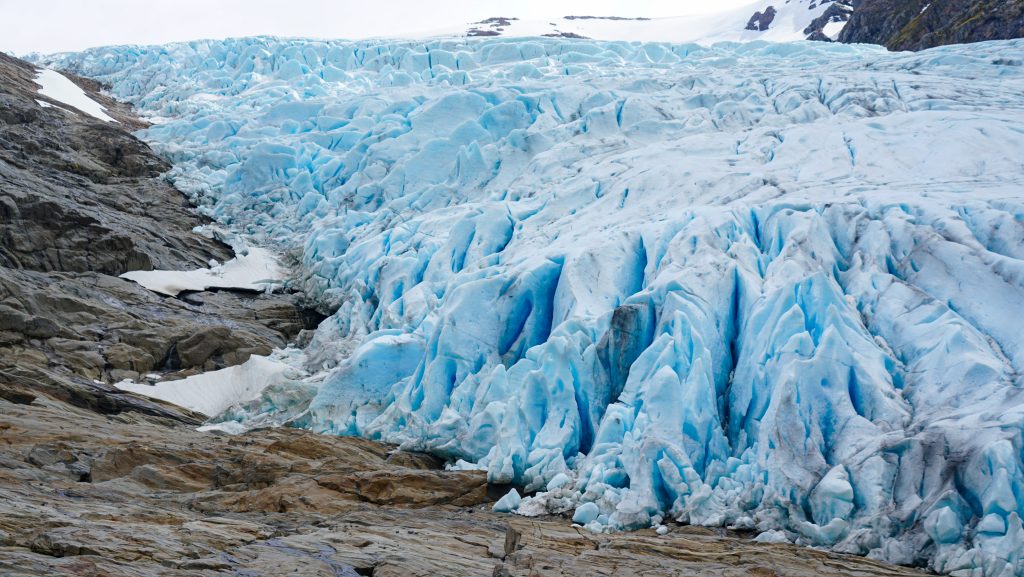

Møre and Romsdal County
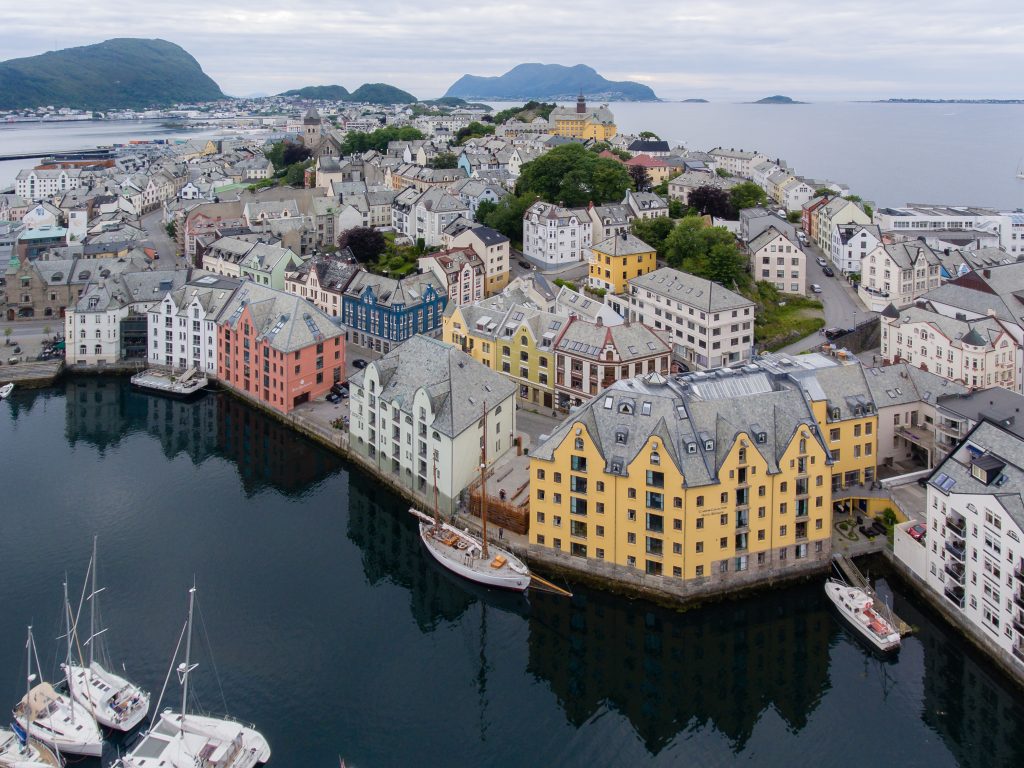
The biggest city in Møre and Romsdal is Ålesund. There was a large fire in Ålesund in 1904. Nearly all of Ålesund city center burned down. The city was rebuilt in Jugendstil (Art Nouveau style). German architects planned the new architecture.
Norway’s tallest waterfall is in Møre and Romsdal and is called Vinnufosen. The volume of water is small even though it is the tallest waterfall in Norway. Midsundtrappen are stone steps with 2,200 steps. It is built by sherpas from Nepal.

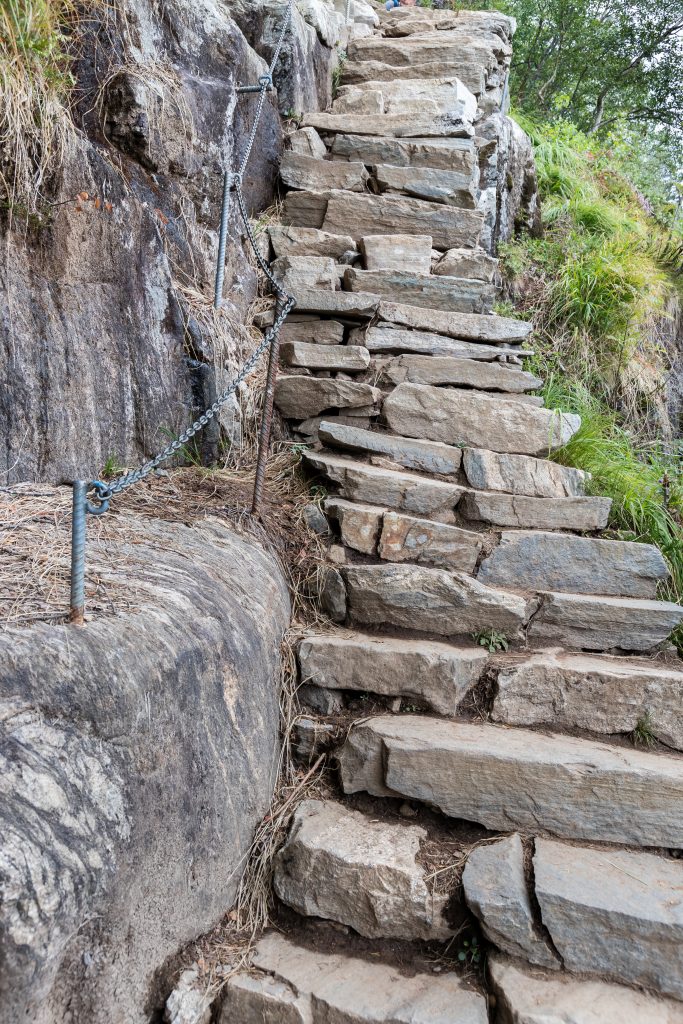
Se alle bildene
Bilder som ikke er merket er lisensiert fra AdobeStock
Learn more about Norway at Samfunnskunnskap.no
At Samfunnskunnskap.no you can find films, texts and inter-active exercises about Norway in different languages.
